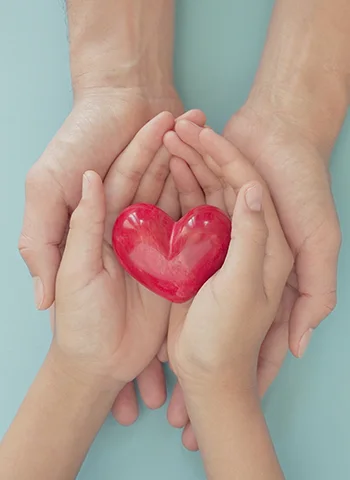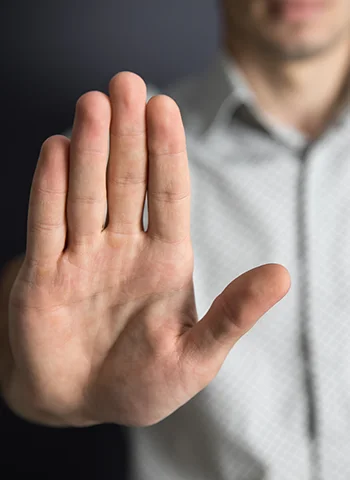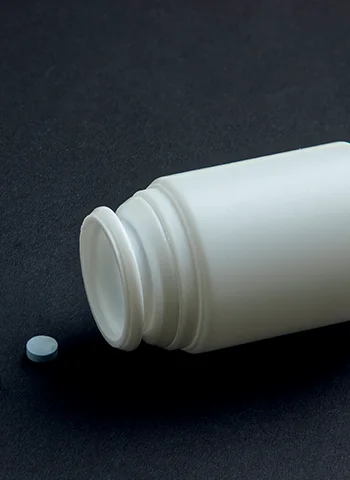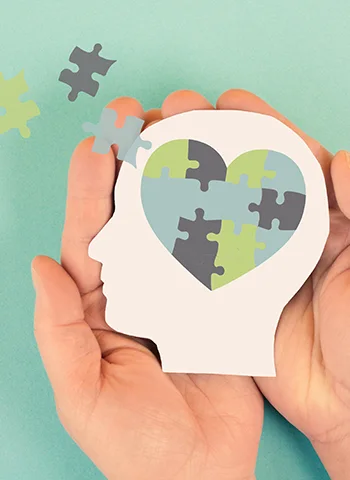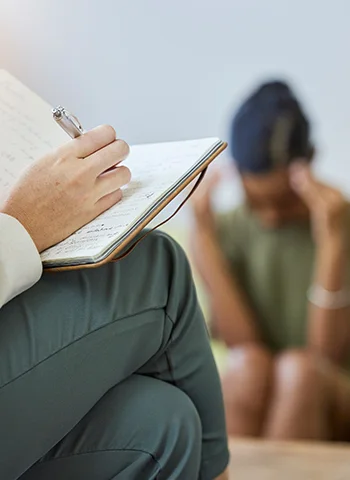Codeine Addiction Treatment
If you are struggling with codeine addiction, the right treatment can help you take control and start your recovery. Codeine is a painkiller often prescribed for mild to moderate pain, but it can be addictive if misused or taken for longer than recommended. Many people find themselves in need of support when they try to stop using codeine on their own.
Codeine rehab often includes a mix of medical support, therapy, and ongoing care. Opioid addiction treatment options range from outpatient services to private inpatient programmes that guide you through every stage of the recovery journey. Finding the right approach is important to give yourself the best chance at overcoming codeine abuse.

Take the First Step Towards Recovery
Steps Together offers personalised support and proven treatments, providing the care, guidance and encouragement you need to move forward with confidence and build a healthier future.

Understanding Codeine Addiction
Codeine is a commonly prescribed painkiller that can cause addiction if used too often or for too long. Over time, the body builds dependence, requiring you to continue using the drug in order to function normally. This can result in cravings, withdrawal symptoms, and difficulty stopping use.
Codeine addiction affects both physical and mental health, often leading to mood changes, fatigue, or impaired judgment. Early intervention and professional treatment greatly improve the chances of recovery.
What Is Codeine?
Codeine is an opiate medication most often used to treat mild to moderate pain or to reduce cough. You may find it in prescription painkillers like co-codamol or some over-the-counter medicines.
If used as instructed by your doctor, codeine can be safe for short-term pain relief. However, your body can build up a tolerance to codeine, so you need higher doses to get the same effect. This can increase your risk of addiction.
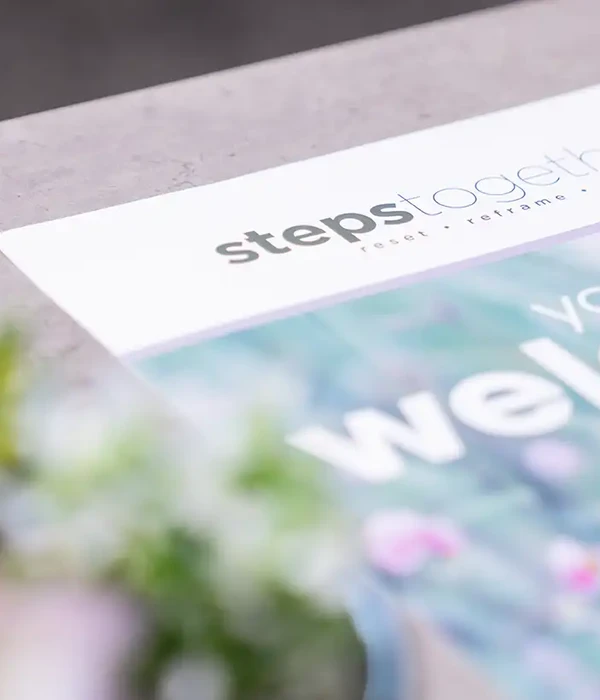

Physical and Psychological Effects
Codeine addiction affects you both physically and mentally. Over time, high or long-term use can bring health risks, including constipation, drowsiness, nausea, itching, and slower breathing. Severe misuse can lead to liver or kidney problems, especially if you take medicines mixed with paracetamol.
Psychologically, the effects of codeine use include feeling anxious, depressed, or losing interest in things you once enjoyed. Strong cravings for codeine can make it hard to stop using, even if you want to quit. In some cases, you may struggle to focus or remember things.
Codeine Addiction Treatment
Codeine addiction treatment often involves a mix of medical and psychological support. The most effective plans address both the body’s dependence and the emotional triggers that fuel ongoing use.
Inpatient and Outpatient Rehab
You can choose between inpatient rehab, where you stay at a rehab facility full-time, or outpatient rehab, where you attend sessions while living at home. Inpatient rehab usually offers a highly structured setting. This approach removes you from situations that may trigger codeine dependence and provides constant professional help.
Outpatient rehab allows you to maintain your daily life while still receiving therapy and support. It suits people with milder dependence or strong support at home. Both forms of rehab will include regular check-ins and therapy, but inpatient care is often preferred for severe cases as it provides round-the-clock care for codeine addiction and abuse.
Medication-Assisted Treatment
Medication may be used to make withdrawal and recovery safer and less uncomfortable. Doctors sometimes prescribe medicines that control cravings and help prevent relapse. These medicines reduce withdrawal symptoms, giving you a better chance to focus on recovery.
Alongside therapy, this combination increases the likelihood of lasting change. Professionals will closely monitor you for side effects or interactions with other medications. Medication is usually tailored to your health needs and may be adjusted as your condition changes.
Behavioural Therapies
Behavioural therapies help you change your thinking patterns and actions related to drug addiction. One well-known approach is Cognitive Behavioural Therapy (CBT), which helps you understand triggers and learn healthier coping skills.
Other effective treatments may include group sessions, motivational interviewing, and experiential therapies. Group therapy helps you learn from others and practise new skills in a safe space. Sessions may also deal with identifying underlying problems, such as trauma or stress, that keep you trapped in addiction.
Holistic Treatment Options
Holistic treatment includes therapies that support your overall well-being, not just the use of codeine itself. These might involve nutrition guidance, exercise programmes, meditation, or art therapy. By improving both your mental and physical health, you are more likely to maintain your recovery.
Yoga and mindfulness activities can help reduce stress and teach you ways to manage negative feelings without relying on codeine. Some treatment centres offer group wellness workshops or one-on-one coaching sessions.
Other drug addiction treatment services we offer

Detoxification and Withdrawal Management
Codeine detox is the first step in overcoming codeine addiction. Safe withdrawal and management help reduce discomfort, lower risk, and support long-term recovery. A medically supervised detox is highly recommended if you are dependent on codeine. Health professionals monitor you to ensure your safety and can provide medicines to ease withdrawal symptoms.
During detox, trained staff regularly check your vital signs and manage symptoms such as sweating, nausea, anxiety, and muscle aches and adjust treatment as needed. The detox process typically begins within one to two days after your last dose, and symptoms can last for about a week.
Managing Withdrawal Symptoms
Codeine withdrawal symptoms can bring both physical and mental challenges. Common symptoms include flu-like aches, sweating, chills, runny nose, muscle pain, sleep problems, and irritability. The symptoms of codeine withdrawal usually peak in the first few days and then slowly improve.
Support strategies may include hydration, gentle exercise, a calm environment, and a balanced diet. In some cases, doctors may prescribe medicines to relieve symptoms such as diarrhoea, anxiety, or insomnia. Staying in contact with your care team is important to track your progress.

Diagnosis and Assessment
Screening is usually the first step if there is suspicion of codeine misuse. You may be asked questions about how often you use codeine, the amount you take, and whether you have increased your dose over time.
To diagnose codeine use disorder, doctors refer to established criteria, such as those in the DSM-5. Typical criteria include taking larger amounts or using longer than intended, failed attempts to cut down or quit, spending lots of time getting, using, or recovering from codeine, cravings, or strong urges to use.
A full medical evaluation helps rule out or identify complications from codeine misuse. Your doctor will take a detailed history, including any co-occurring physical or mental health issues. Blood tests, urine drug screens, and checks for signs of liver or kidney damage are common parts of this assessment.
Support Systems and Aftercare
After your initial treatment for codeine addiction, ongoing support is key for long-term recovery. Careful planning, proven strategies, and help from family and peers can make a real difference in staying free from codeine.
Continuing Care Planning
When you leave a codeine addiction treatment programme, continuing care helps you stay on track. This plan often includes regular check-ins with medical professionals, outpatient appointments, and scheduled therapy sessions.
You may get connected to local mental health services or addiction counsellors who guide you through possible challenges in your daily life. Maintaining structure helps you handle triggers and manage stress without turning back to codeine.
Family Involvement and Support Groups
Family support can boost your motivation and help reduce the chance of relapse. Involving close relatives in meetings or therapy sessions encourages honest communication and trust. You may also want to share progress and challenges so everyone can understand your needs.
Support groups like Narcotics Anonymous provide a safe space for individuals to share their stories, receive encouragement, and foster strong connections. These groups offer accountability and remind you that addiction is not faced alone.
Relapse Prevention Strategies
Relapse is common, especially in the first months after treatment. You are most at risk when routines change or stress hits. Understanding your triggers, like boredom, sleep issues, or social pressure, helps you act before cravings grow.
Effective strategies to stop taking codeine include making a list of personal triggers, setting up regular check-ins with support staff, and learning coping techniques, such as mindfulness or breathing exercises. Using reminders and written plans can keep your goals clear.
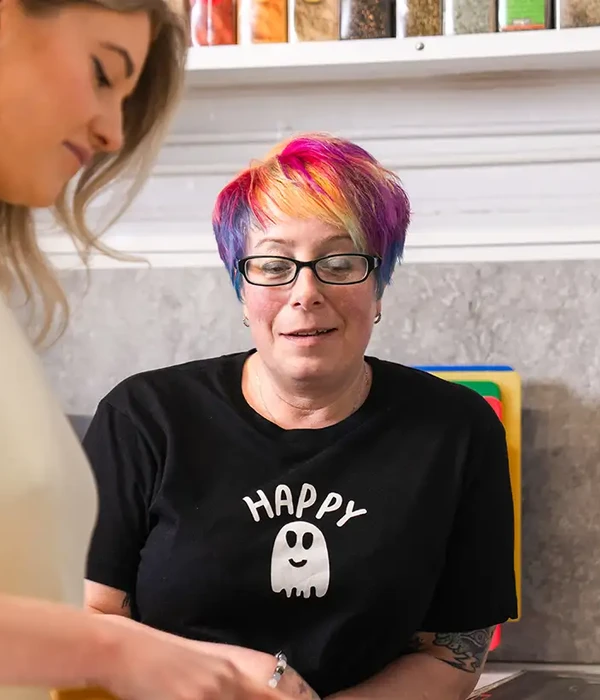
We Can Help You Beat Codeine Abuse
Seeking help for codeine addiction requires a personalised approach that includes professional guidance, emotional support, and a clear recovery plan. Drug rehab treatment often begins with managing withdrawal symptoms, followed by therapy to address the emotional and psychological aspects of addiction.
Medication may also be used to ease cravings and support recovery. Treatment length varies depending on individual needs. Whether you or a loved one is struggling, Steps Together is here to provide the care, encouragement, and tools needed to take the first step towards recovery.
Frequently Asked Questions
What are the first steps in treating an addiction to opioids like codeine?
Usually, your treatment begins with an assessment by a healthcare professional. They look at your symptoms, substance use, and health history to make a plan that fits your needs. Detoxing from codeine might be the first step, followed by a structured treatment programme.
Can psychological therapies be effective in managing codeine addiction?
Yes, psychological therapies are often key in treating codeine addiction. Counselling, cognitive behavioural therapy, and group therapy can help you address triggers and break unhealthy habits. These therapies also teach you how to cope without turning back to codeine.
How does one cope with withdrawal symptoms during codeine detoxification?
Withdrawal can cause anxiety, aches, sweating, and trouble sleeping. You may be given medications to manage discomfort, and professional help from a rehab centre or clinic can make the process safer. Support from friends, family, and therapists also helps.
How does medication-assisted therapy work for opioid dependence?
Medication-assisted therapy uses medicines such as methadone or buprenorphine. These help reduce cravings and withdrawal symptoms, making it easier for you to stop using codeine. Most programmes also offer regular support and check-ups.
What is the typical duration of treatment for someone addicted to codeine?
Treatment length depends on your needs, the severity of your addiction, and your progress. Some people need a few weeks, while others need several months. Ongoing support after treatment can lower the risk of relapse.
Are there any risks associated with the long-term treatment of opioid addiction?
Yes, there can be side effects from long-term medication use, such as constipation or drowsiness. It’s also important to follow your treatment plan closely, as misuse can lead to further health risks. Regular reviews with your healthcare provider ensure the treatment stays safe and effective.
